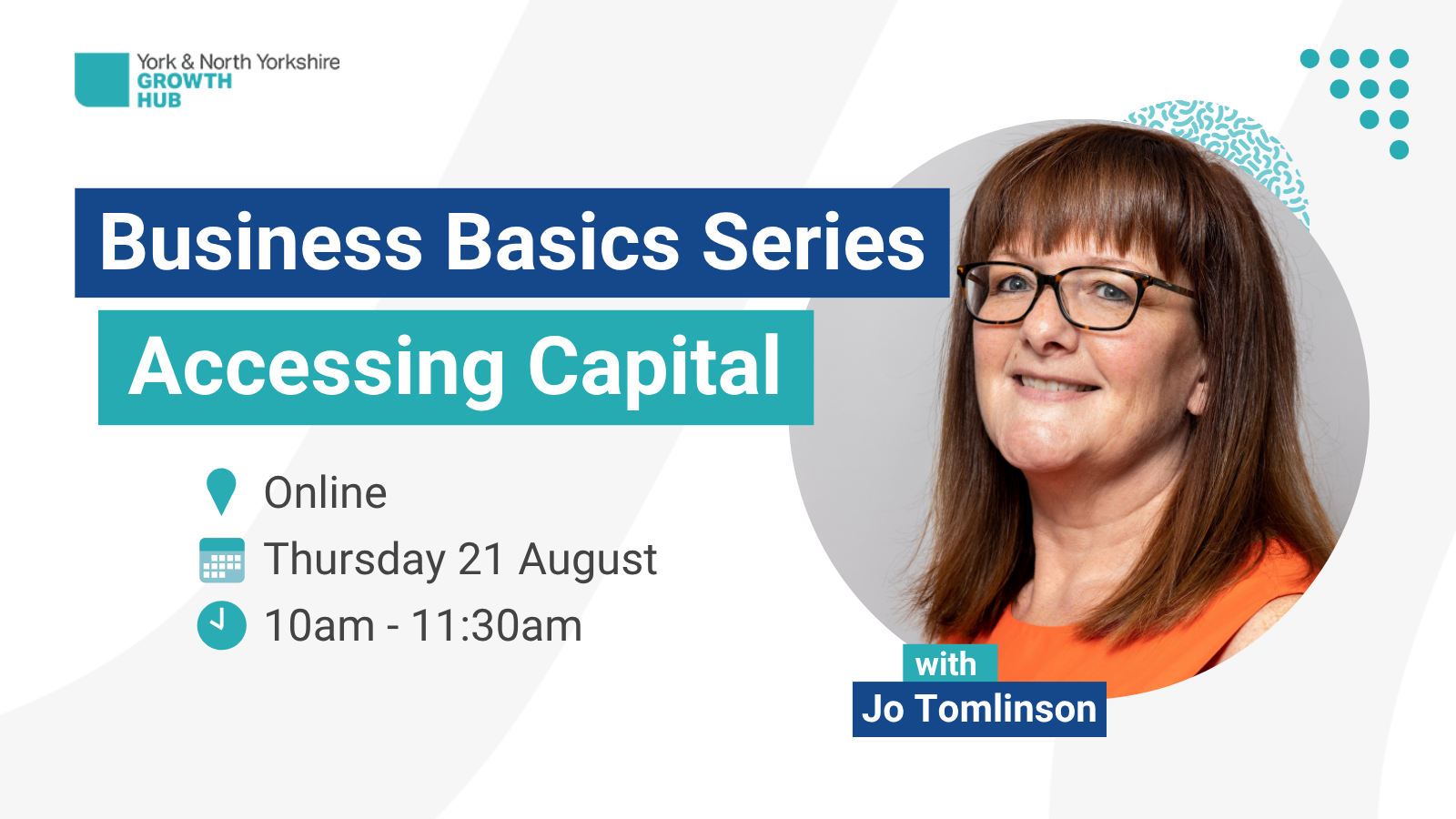Business Basics – Shared Ownership
Directors and shareholders of UK companies have many rights and responsibilities, but how do these change when you are one of a number of shareholders in a company?
The rights and responsibilities of UK Directors and Shareholders can vary based on the percentage of shares you own, and it important to understand the implications associated with this, and also what you can do to protect your interests.
There are different kinds of ways of sharing ownership in a business, depending on the business structure. Mostly, this is done via a limited company, but you can also share ownership via a sole trader partnership or an LLP. This document mostly covers limited companies.
Rights and Responsibilities
Not all shares necessarily have the same rights. You should check what rights your shares have. In the main, shares will have some or all of the following rights:
- Dividends – rights to be paid dividends, when they are issues
- Voting – the right to vote on important decisions
- Share of assets if the company is wound up
The most common share class for SME’s in the UK is Ordinary shares. These carry voting rights, the right to dividends and the right to a share of the assets of the business, if it is would up.
The following rights of shareholders, mostly relates to the rights to the owners of Ordinary Shares.
The Majority Shareholder
- Super-majority – 75-90%
Owning 75% or more of the share capital in a UK company allows the passing of a special resolution. This ordinarily requires 75% of the votes, but if you own more than 75% of the shares and these shares have voting rights, then you have this ability without the need to vote.
A special resolution allows you to make key changes
- Altering the articles of association
- Change the company name
- Approve share buyback
- Influence director appointments and removals
- Wind up the company
Person of Significant Control on Companies House
- Controlling interest – Over 50%
Owning 50% or more of the share capital in a UK company allows the passing of an ordinary resolution. This ordinarily requires 50% of the votes, but if you own more than 50% of the shares and these shares have voting rights, then you have this ability without the need to vote.
- Appointing and removing directors
- Authorising directors to allot shares
- Approve loans to directors
Person of Significant Control on Companies House
- Over 25%
Owning 25% or more of the share capital gives you the right to block special resolutions. This puts them in a strong negotiating position as they can prevent significant company changes.
Person of Significant Control on Companies House
Minority Shareholder rights – Statutory Rights (companies Act 2006)
- Right to Vote:
Minority shareholders have the right to vote on company matters at general meetings, with voting power proportional to their shareholding.
- Right to Dividends:
They have the right to receive declared dividends, provided the company has distributable profits.
- Right to Information:
They have the right to inspect certain company records and financial statements, such as the register of members, meeting minutes, and statutory accounts, though access to other records may not be automatic and can be restricted by confidentiality.
- Right to a Share Certificate:
Every shareholder is entitled to a share certificate.
- Right to a Poll Vote:
Shareholders with 10% or more of voting rights can demand a poll vote at a general meeting.
Rights Based on Shareholding Thresholds
- 5% or More:
- Request the company to call a general meeting.
- Require circulation of a written resolution to other shareholders.
- 15% or More:
- Can apply to the court to object to a variation in the rights of their share class.
Protection Against Unfair Prejudice
This key provision allows a minority shareholder to petition the court if they believe their interests have been unfairly prejudiced.
- Examples of Unfair Prejudice:
Exclusion from management, improper allocation of profits, or dilution of their ownership through a share issue.
- Court Remedies:
The court has wide discretion and can order remedies such as compensation or require the majority shareholders to buy out the minority shareholder’s shares at a fair value.
Important Considerations
- Action is Key:
Courts may reject applications if a shareholder has been inactive and allowed objectionable behaviour to continue for too long.
- Documentation:
Proving unfair prejudice often requires access to and documentation of company records.
- Professional Advice:
Given the complexities, seeking legal advice is recommended to understand specific rights and protections.
Contractual Rights
- Articles of Association:
A company’s articles can grant additional rights to shareholders, such as veto rights over specific decisions.
- Shareholders’ Agreement:
A separate private agreement between shareholders can create more extensive or tailored protections, including powers of veto over major decisions or specific information rights.
Person of Significant Control on Companies House – Directors and PSC’s are declared on Companies House.
- Shareholding:
The individual directly or indirectly holds more than 25% of a company’s shares.
- Voting Rights:
The individual directly or indirectly holds more than 25% of the company’s voting rights.
- Board Appointments:
The individual holds the right to appoint or remove the majority of the company’s board of directors.
- Significant Influence or Control:
The individual otherwise has the right to exercise, or actually exercises, significant influence or control over the company’s activities.
Shareholders’ Agreements
If you are looking at sharing ownership of a UK LTD Company, it is highly recommended that you have a shareholders agreement. This is to protect all shareholders, and to declare any rights or responsibilities that may vary from the standard and contractual rights.
It is a private, legally binding contract between a company’s shareholders. It sets out rights, obligations and responsibilities. It also looks at the company’s management and operations. It is crucial for protecting shareholder interests.
- Protects interests:
Ensures fair treatment for all shareholders and clearly defines their rights and obligations.
- Manages disputes:
Provides a framework and procedure for resolving conflicts between shareholders, minimizing costly legal battles.
- Regulates share transfers:
Establishes rules for buying and selling shares, preventing unwanted third parties from becoming shareholders.
If you are looking at sharing ownership of a UK LTD Company, it is highly recommended that you have a shareholders agreement. This is to protect all shareholders, and to declare any rights or responsibilities that may vary from the standard and contractual rights.
It is a private, legally binding contract between a company’s shareholders. It sets out rights, obligations and responsibilities. It also looks at the company’s management and operations. It is crucial for protecting shareholder interests.
- Protects interests:
Ensures fair treatment for all shareholders and clearly defines their rights and obligations.
- Manages disputes:
Provides a framework and procedure for resolving conflicts between shareholders, minimizing costly legal battles.
- Regulates share transfers:
Establishes rules for buying and selling shares, preventing unwanted third parties from becoming shareholders.
- Defines management and operations:
Outlines procedures for important decisions, such as appointments, distribution policies, and reserved matters.
- Provides clarity and certainty:
Replaces informal verbal agreements with a clear, documented framework, reducing ambiguity.
Key elements to include:
- Share rights and obligations: Outlines what each shareholder can and cannot do.
- Share transfers: Specifies the rules and procedures for transferring shares.
- Board and management structure: Details how the company will be run.
- Director appointments: Sets out the process for appointing directors.
- Decision-making processes: Defines which matters require shareholder approval and the required thresholds for voting.
- Dispute resolution: Provides a method for resolving disagreements.
- Veto rights: Grants certain shareholders the right to block specific key decisions.
Most common issues and potential solutions
Extracting funds – Dividends are issued per share, so if the activity that each shareholder does, or value they generate, is not directly in proportion to their shareholding, how do you ensure that what each shareholder is paid is fair.
- You could issue alphabet shares. Dividends are paid per share, within each share class, so this would allow you to pay holders of A class shares differently to those who hold B class shares
- Payroll. Even if all shareholders are paid dividends in proportion to their shareholding, this doesn’t mean they all have to be on the payroll for the same amount.
Conflict resolution – If you and your business partner both own 50% of the shares, then you can end up at an impasse if you don’t both agree on everything.
- Agree upfront a 3rd party who will be used to mediate
- Have a minority shareholder, who’s voting rights can create a majority.
- Have a 51% shareholder
- Include in the shareholders agreement, what will happen if agreement can not be reached.
Business Debts – Directors and shareholders can be personally liable for business debts
- Include rules in the shareholders agreement around who is authorized to establish new company liabilities. This generally falls into 3 areas:
- Hiring new people
- Capital purchases
- Operational purchases
Communication – as with all things, communication is key. It is important to align vision and decision making
- Ensure clear agreements are documented for all important decisions
- Regular meetings to discuss all aspects of the business
- Agreement of roles and responsibilities
- Include all these items in the shareholders agreement
Sole-Trader Partnerships
Sometimes, businesses with shared ownership are sole trader businesses. For these businesses, as with the rules associated with sole trader businesses in general, there is no separation in the eyes of the law between the owner of the business and the person.
With a sole trader partnership, a partnership self-assessment tax return is submitted. The trade of the business is included on this return, along with the percentage split between its partners. This percentage can vary each year.
The individual partners include their percentage of the profit on their self assessment tax returns.
It is strongly advisable to have a partnership agreement to clarify responsibilities, the distribution of profits/losses and how to resolve disputes.
If there is no partnership agreement, the provisions of the Partnership Act 1890 will apply.
Limited Liability Partnership (LLP)
Similar to the sole-trade partnership, but with limited liability, and additional reporting requirements on Companies House.
Often used by professional service providers, where fee earners income generation varies significantly year on year.
Joint and Several
This is a legal term that relates to agreements entered into by two or more people. It means that each individual will have liability for the whole sum.
Autumn Budget 2025 – How will it impact your business?
The Autumn Budget, announced on 26 November 2025, introduced a range of changes that business owners need to be aware of. From updates to taxation and compliance rules, to adjustments in incentives and support schemes.
Risk and Resilience in Your Business
Running a business can be risky. There are so many things that can impact your performance, and profit. Potentially destroying all that you worked so hard to build. Some of these things are impossible to plan for, but lots of potential risks can be mitigated by identification and planning.
Business Basics – Cash Flow v Profit
Many small business owners can get confused when looking at numbers relating to their business, and often this is due to cash and profit being understood as one and the same thing. It is crucial to understand the difference between these two metrics so that decision making is not flawed.
Business Basics – Project Evaluation
Projects can be anything from taking on a new person, or launching a new product, to building a manufacturing site, or acquiring a business to merge with the current one. How you evaluate each project can vary depending on size and complexity. But undertaking the exercise leads to better decision making and control.
Building Resilience and Sustainability into your Farming Business
Resilience and sustainability lie at the heart of modern farm business strategies, ensuring that agricultural enterprises can withstand economic shocks, adapt to evolving environmental regulations, and maintain profitability amid climate volatility. By embedding sustainable practices, ranging from energy efficiency to regenerative soil management, farmers not only safeguard their livelihoods but also contribute to broader goals of food security and environmental stewardship.
Business Basics – Shared Ownership
Directors and shareholders of UK companies have many rights and responsibilities, but how do these change when you are one of a number of shareholders in a company?
Business Basics – Selling a Business or Shares in a Business
Being aware of your business's value enables you to determine a fair selling price for some or all of your shares and negotiate efficiently with prospective buyers. But where do you find a buyer for your shares, and what happens now?
Business Basics – How much is your Business Worth
Being aware of your business's value enables you to determine a fair selling price for some or all of your shares, negotiate efficiently with prospective buyers, and secure beneficial financing deals, among other advantages.
Business Basics - Forecasting
Although we don’t have a crystal ball, so forecasts are fundamentally informed guesses, businesses need to use them to make informed business decisions and develop business strategies.
Business Basics – Accessing Capital for Growth
Gaining access to outside investment means you don’t have to give up on your dream. So how do you prove to any potential investor that your business model is worth
Farm Diversification: Where to start
According to DEFRA, 71% of farm businesses in 2023/24 have some form of diversified activity, up from 61% in 2014/15. Income from these activities produced £1.393 billion in 23/24, up from £1.321 in the previous year. This demonstrates how important these income streams have become.
Business Basics – Making Tax Digital
Making Tax Digital (MTD) for Income Tax and Rental Income is the biggest change to Self-Assessment since it was launched by HMRC over 30 years ago.
Young Entrepreneur Guide
Do you have a business idea? Or do you want to work for yourself? Then the Young Entrepreneur Guide is here to help you!












